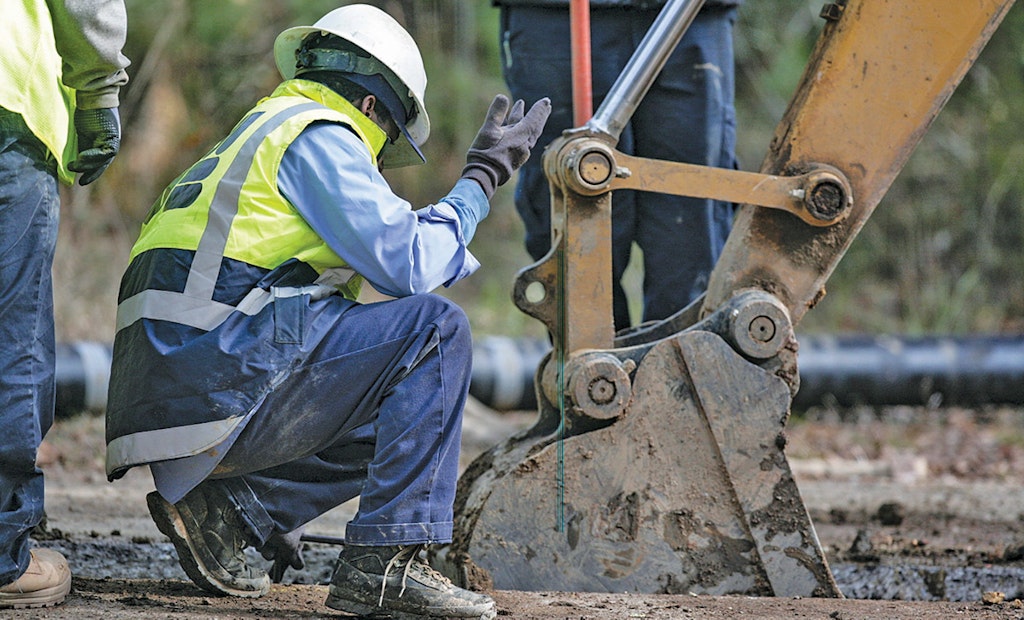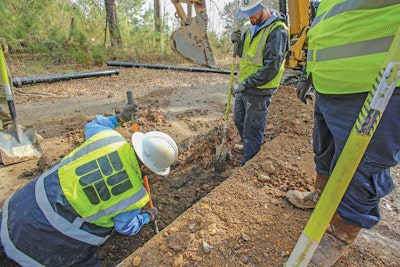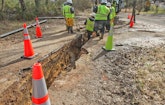
Birmingham Water Works maintenance crew member Willie Byner guides a trackhoe operator during excavation of a water line for replacement. (Photography by Meg McKinney)
The water system in Birmingham, Alabama, includes more than 4,000 miles of water main, some of which dates back nearly a century. Keeping water moving efficiently and rates low is an ever-present challenge.
Birmingham Water Works is addressing the issue by replacing one aging pipe...







